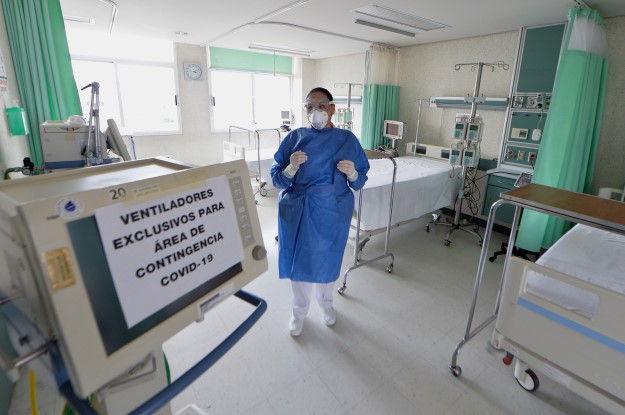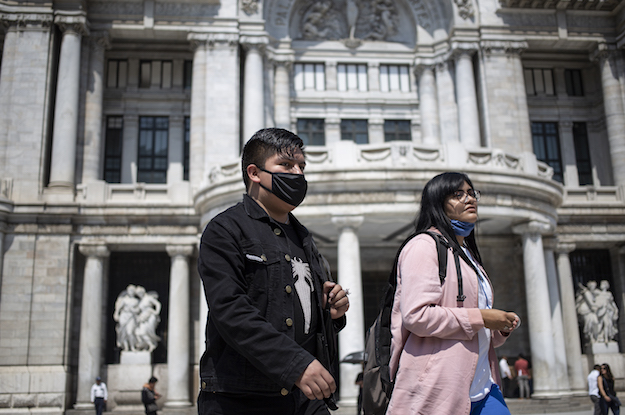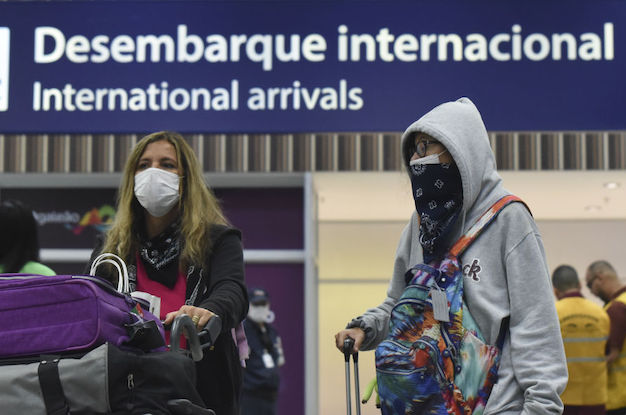As expected, the coronavirus is spreading in Latin America. Brazil had its first confirmed case on February 26, two days later Mexico registered a first occurrence, while Argentina was investigating six potential cases. Now Chile, Paraguay, Peru, Ecuador, Colombia, Costa Rica, the Dominican Republic and others have also detected at least one patient with COVID-19.
What are the biggest challenges ahead for the region?
First, one needs to recognize the enormous uncertainty regarding the outbreak in Latin America – including whether a warmer climate can slowdown the coronavirus’ spread. But the COVID-19 emergency in the region has two main differences from the epidemic in countries nearer to the crisis’ epicenter. The first concerns the unexpected healthcare shock in a context of precarious sanitation and structural inequalities. Latin America already faces other epidemics – including measles, dengue and other arboviruses.
The second is that Latin American countries are feeling the economic pain of the coronavirus – the disruption of supply chains, the markets’ reaction and other developments undermining global growth – even before the virus begins to spread at higher rates in the region. This “inversion” is particularly worrisome: the ongoing economic downturn driven by coronavirus may deprive Latin American governments of the revenue they need to fight the outbreak.
Latin America invests less in healthcare than most regions: $949 per capita every year, almost four times below the OECD average of $3,973, and even less than the Middle East and North Africa ($1,420). The public sector in Latin America spends on average 3.7% of GDP in healthcare, while the OECD average is 6.6%. Although the OECD is not projecting reductions in healthcare spending in Mexico, Brazil and Argentina, new investments seem unlikely over the next couple of years. In fact, most countries in the region are struggling to keep the current levels of financing for public health.
Therefore, unlike countries with earmarked or emergency funds for epidemics, the responses to COVID-19 in Latin America will have to be based on redirecting resources already allocated for healthcare – there may be no additional money available. In a scenario of accumulated healthcare problems and severe fiscal constraints, containment measures against epidemics and efforts to treat those who are already sick tend to be less efficient.
All these problems relate to the “supply side” – or the provision of healthcare services. But Latin America also has a challenging and complex environment in the “demand side”. In short: healthcare infrastructure across the region is already extremely overloaded.
Although Latin America has made progress in reducing deaths from infectious diseases, these continue to be a priority. In general, countries are in a better position than a decade ago on areas like water quality, basic sanitation and controlling vectors that transmit infectious diseases. With few exceptions, vaccination is more widespread, as well as control measures for HIV-Aids. But Latin America faces persistent failures in the control of arboviruses – dengue being a conspicuous case. These diseases are transmitted by a variety of vectors – the agent which carries the infectious pathogen – and treatment is difficult. Also, things are not improving as they should: in 2019, Latin America had a record high of 1,538 registered deaths from dengue fever.
In addition, the region is undergoing a simultaneous rise in non-communicable diseases, including cancer and diabetes, and violence remains a critical healthcare issue – one third of homicides in the world take place in Latin America.
In addition, the region is undergoing a simultaneous rise in non-communicable diseases, including cancer and diabetes, and violence remains a critical healthcare issue – one third of homicides in the world take place in Latin America. The coronavirus epidemic will not reduce the enormity of these other challenges.
For now, the cases of COVID-19 recorded in Brazil, Mexico, Chile and Argentina were “imported”: the patients contracted the virus abroad, or from a person infected abroad. There has been ample time for preparation and planning to contain the epidemic. In general, the discussion has been driven by experts and researchers, called upon by governments and the media to explain the risks. The political use of the crisis has been limited – at least for now.
More importantly, the coronavirus can open a window of opportunity for countries to set priorities to fight epidemics – such as the development of new vaccines or innovative measures to fight vectors. Also, the topic of access to healthcare will probably gain more attention.
In most Latin American countries, healthcare is a social right. In practice, however, access and usage of healthcare services are rationed or require payment, effectively rendering them off-limits to the poorest parcels of the population. The COVID-19 pandemic, in an unexpected way, is exposing how risky this situation is for all the population.
—
Bahia is an Associate Professor in Collective Health at the Federal University of Rio de Janeiro (UFRJ). Lago is the Executive Director of the Health Policy Studies Institute (IEPS) .







